The Orange Trees of Cordoba: Discover the Beauty of the Patio de los Naranjos in Spain
The Patio de los Naranjos of the Mosque-Cathedral of Cordoba is a place full of history and beauty. Throughout the centuries, it has undergone different transformations that reflect the confluence of cultures and traditions that characterize this city. In the Islamic era, it served as a space for public activities and purifications. Later, in the 16th century, a remodeling took place, giving it its current appearance. Today, the Patio de los Naranjos is an architectural treasure and a tourist attraction, in addition to being a venue for events and celebrations.
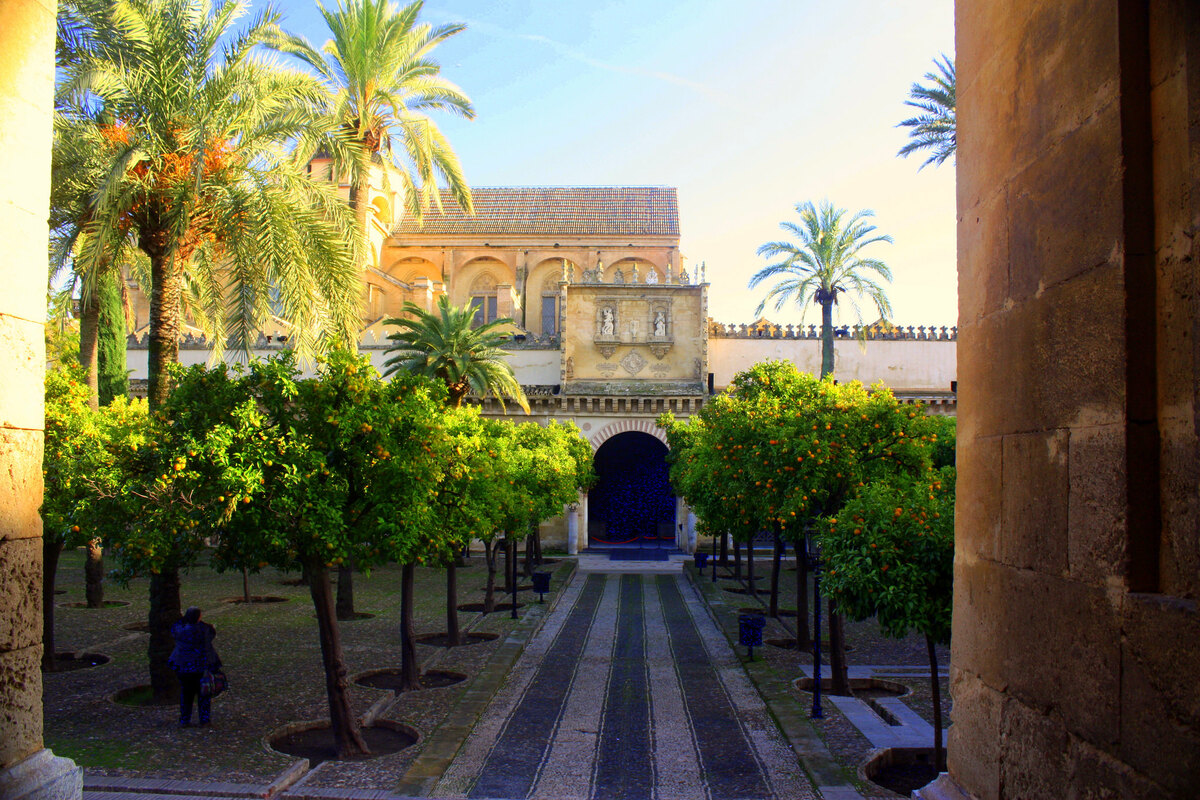
Patio de los Naranjos of the Mosque-Cathedral of Cordoba
The Patio de los Naranjos of the Mosque-Cathedral of Cordoba is a place full of history and beauty that has attracted thousands of visitors over the centuries. This iconic space reflects the cultural symbiosis that has characterized the city of Cordoba in Spain over time.
History and Beauty of the Patio de los Naranjos
The courtyard has undergone various changes over the years, a testament to its rich past. In the Muslim era, it was recognized as a site designated for public events and ablution rituals. Beneath the orange trees, there was a cistern that provided the necessary water for these purifications, turning the courtyard into a ceremonial and gathering place.
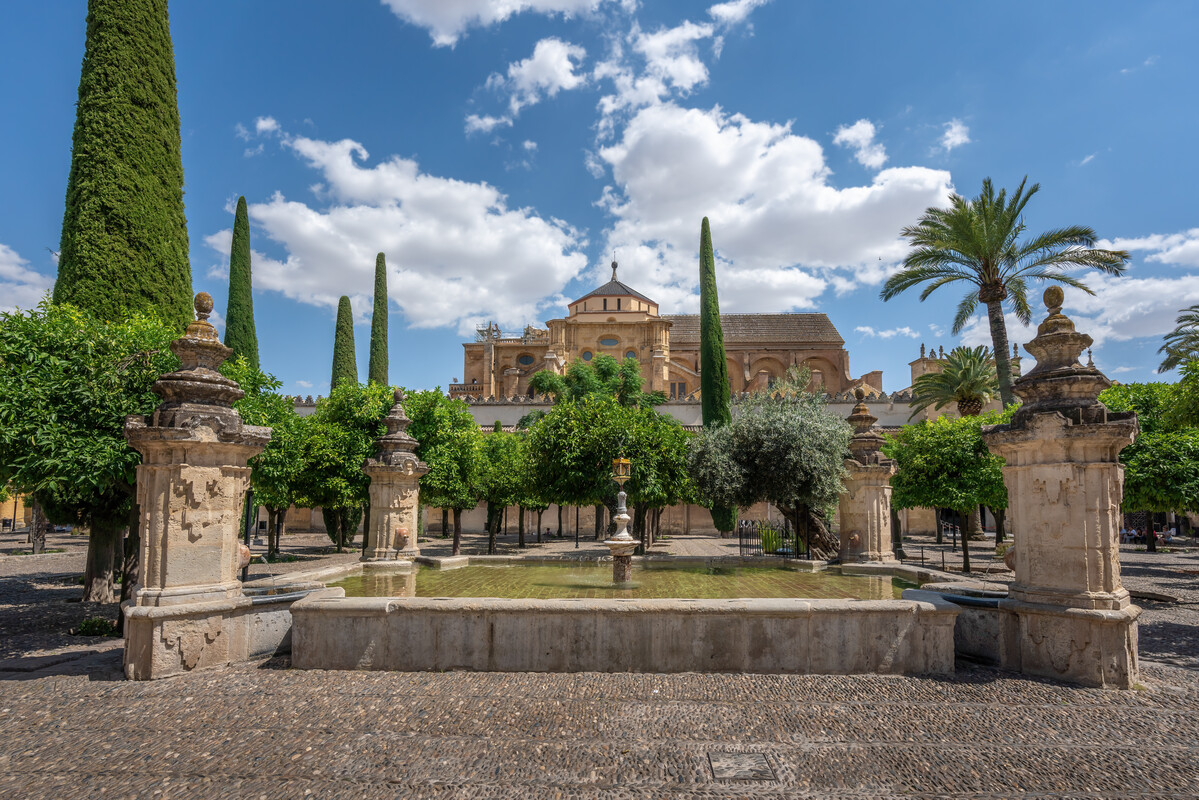
Transformations Throughout the Centuries
Throughout history, the Patio de los Naranjos has undergone significant variations. One of the most notable was its expansion to the north during the time of Abd al-Rahman III, which involved the demolition of the old minaret of Hixem I, as well as the extension to the east by Almanzor in the 10th century. These transformations reflect the evolution of the courtyard over time and the influence of different eras and civilizations.
Meaning and Use in the Islamic Era
In the Islamic era, the Patio de los Naranjos held great importance. In addition to being used as a space for public activities and rituals before entering the temple, it was designed as a porticoed courtyard from its inception. The porticoed galleries, built by Abderramán I and Hixem I, bear witness to Islamic architecture and the cultural traditions of the time.

The 16th Century Remodeling and Its Current Appearance
Remodeling of the Galleries by Martín Fernández de Angulo
In the 16th century, Bishop Martín Fernández de Angulo, along with the architect Hernán Ruiz, the Elder, carried out a significant remodeling of the galleries of the Patio de los Naranjos. This project completely transformed the appearance of the courtyard and gave it the look that we can appreciate today.
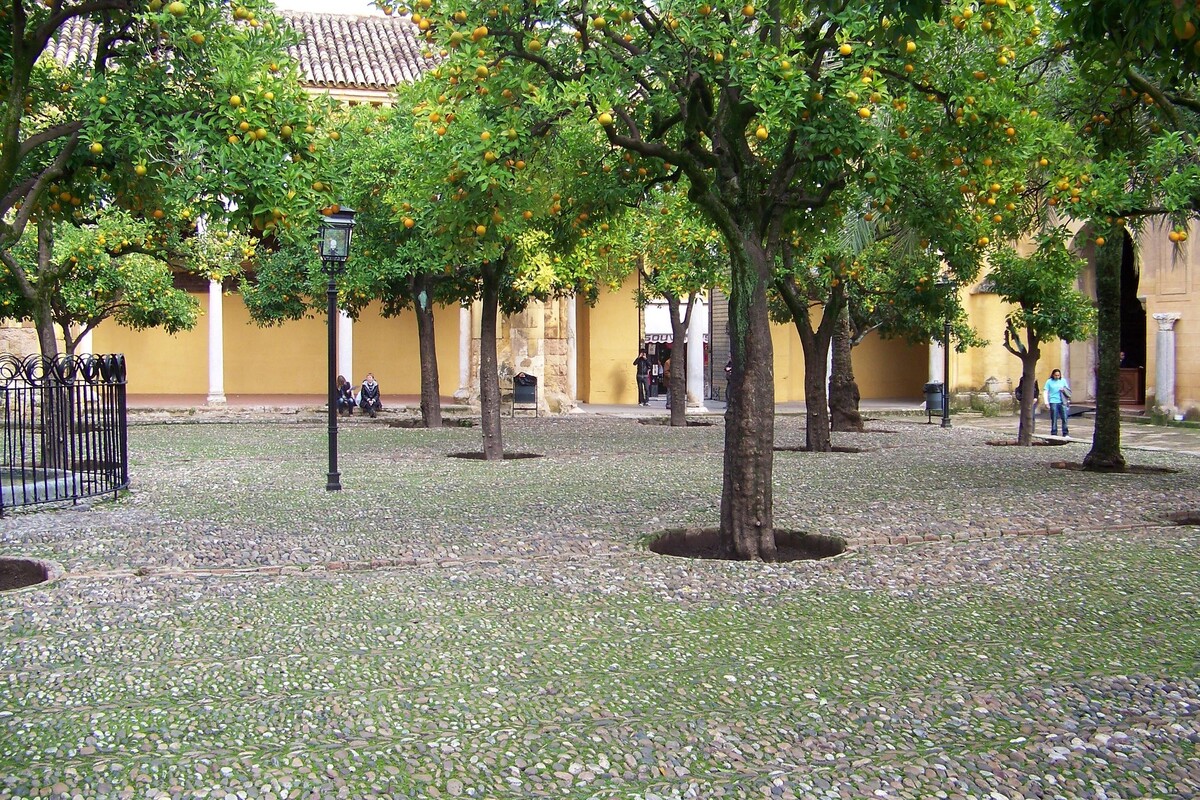
Christian Influence on the Courtyard Facades
As part of the remodeling, the facades facing the courtyard were redesigned following an architectural scheme with Christian influence. These facades were divided into sections of three semicircular arches with raised keystones, framed by an alfiz (arch rectangle). This style reflected the transition from Islamic to Christian architecture, merging elements from both traditions.
The remodeling carried out by Martín Fernández de Angulo not only succeeded in renovating the galleries of the Patio de los Naranjos but also contributed to highlighting and preserving the rich history of Cordoba and the influence of the different civilizations that have left their mark on the city.
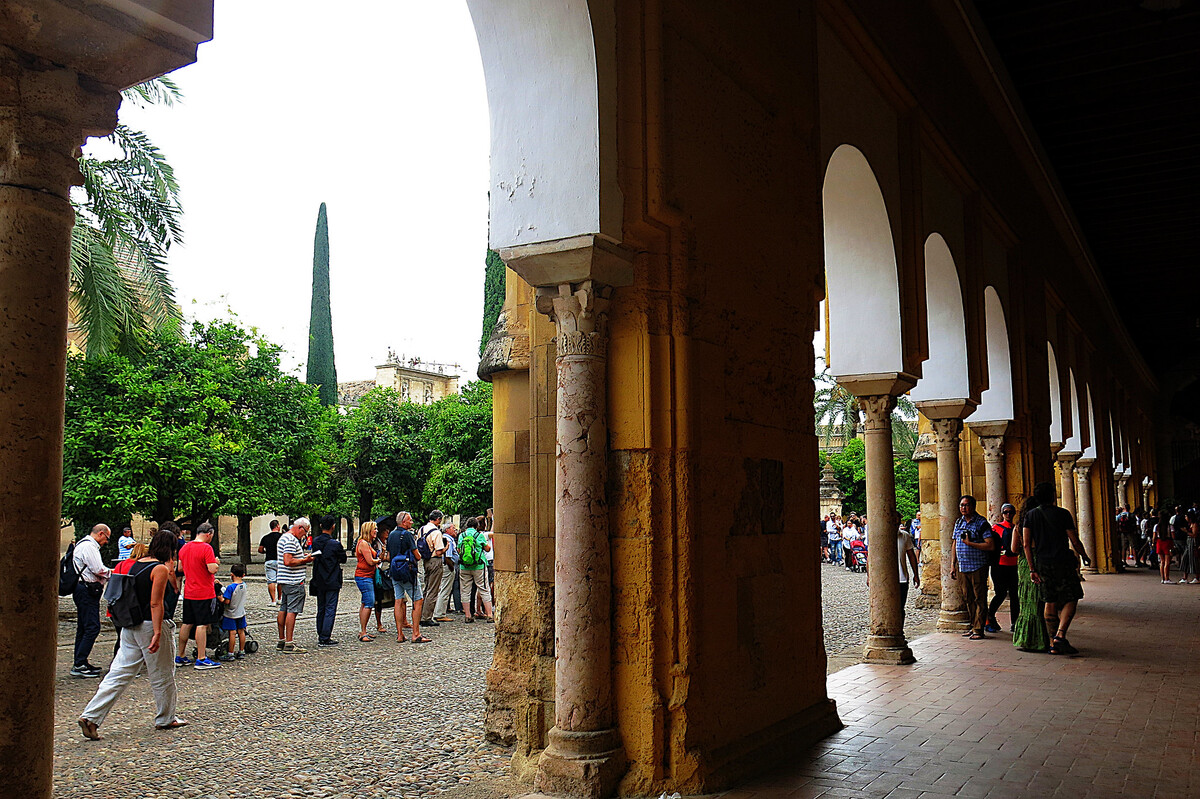
The Use of the Courtyard after the Christian Conquest
Testimony from the Gómez de Alcázar Family
Following the conquest of Cordoba by Ferdinand III, the Holy, the Patio de los Naranjos continued to be a place of importance. Evidence of this is the request made by the Gómez de Alcázar family in 1263 to be buried in the cloister of Santa María. At that time, the courtyard galleries consisted of horseshoe arches arranged in a series, with small semicircular openings in the spandrels and a cornice crowned by stepped battlements.

Architectural and Decorative Features of the Courtyard Today
Today, the Patio de los Naranjos preserves architectural and decorative elements that reflect the rich history of Cordoba and the influence of different civilizations that have left their mark on the city. The 16th-century remodeling gave it an architectural style that reflects the current Christian influence.
The presence of orange trees in the courtyard dates back to the 15th century, and in the 18th century, olive and cypress trees were added, turning it into a beautiful garden that merges styles and cultures. These elements, along with the horseshoe arches, raised semicircular arches, and columns, contribute to the current appearance and architectural charm of the courtyard.
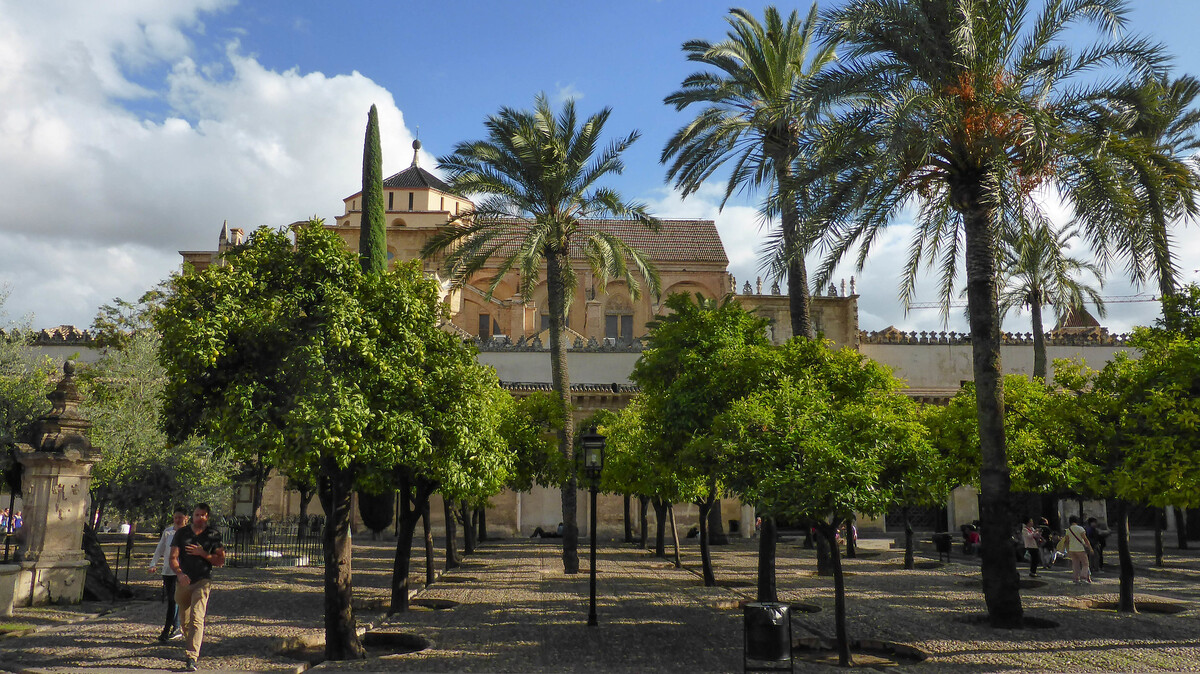
The Patio de los Naranjos as a Tourist Attraction
Historical and Architectural Value of the Courtyard
The Patio de los Naranjos of the Mosque-Cathedral of Cordoba is a place of great historical and architectural value. Its rich history reflects the confluence of cultures and traditions that characterize this Spanish city. This iconic space, with the changes it has undergone over the centuries, attracts tourists from around the world.
The original design of the courtyard in the Islamic era, with its porticoed galleries and a large cistern under the orange trees for purifications, demonstrates its importance for Muslims. Later, the remodeling carried out in the 16th century gave the courtyard its current appearance, indicating a marked Christian influence.
The decorative elements of the courtyard, such as the horseshoe arches and raised semicircular arches, as well as the columns, bear witness to the rich history of Cordoba and the influence of the different civilizations that have left their mark on the city.
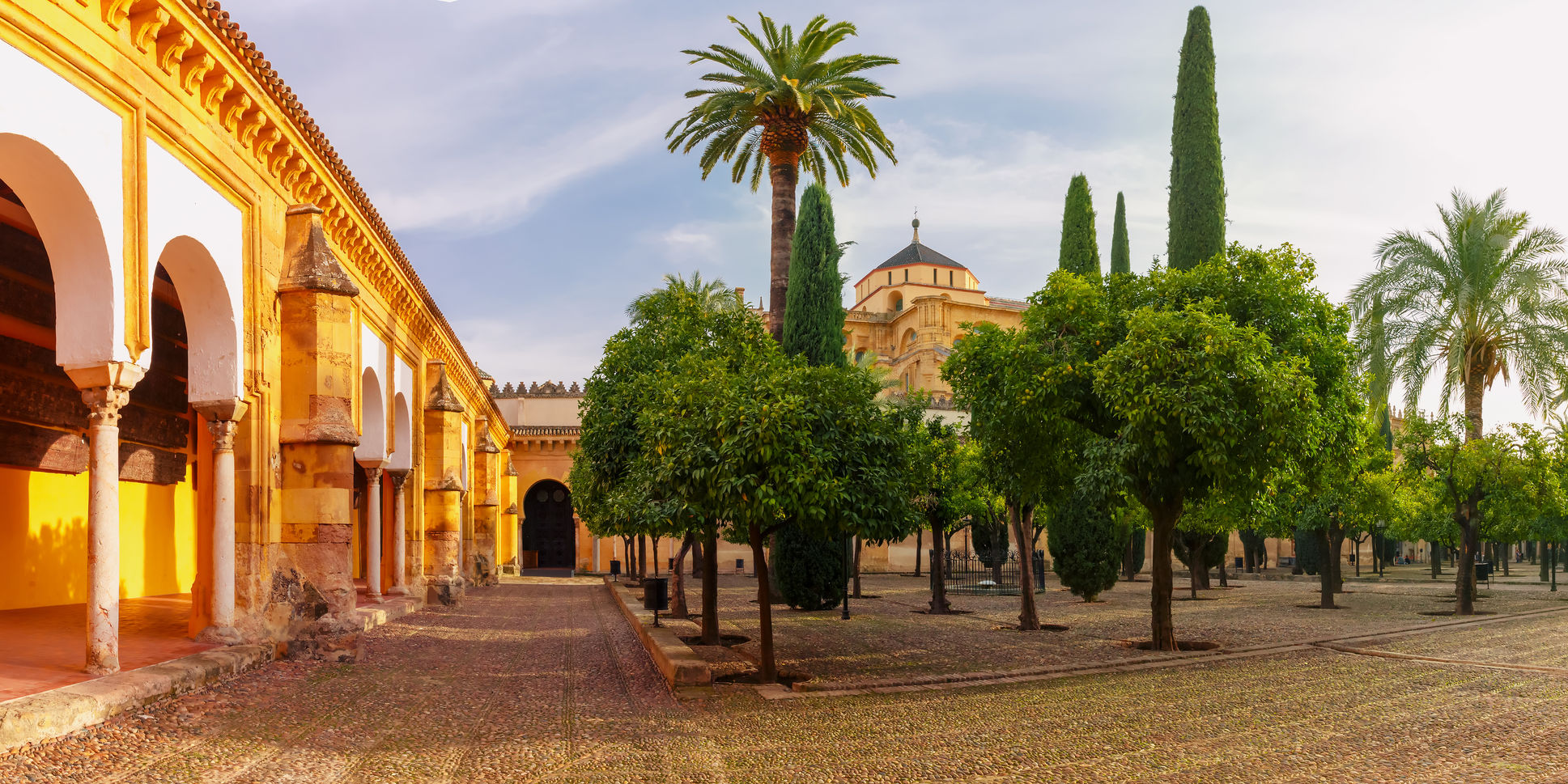
Venue for Events and Celebrations
In addition to its historical and architectural value, the Patio de los Naranjos also serves as a venue for various events and celebrations. Its unique beauty and special atmosphere make it a perfect place for weddings, concerts, exhibitions, and other cultural activities, such as Holy Week.
Imagine celebrating a wedding surrounded by the history and beauty of the courtyard, with its orange trees and impressive architecture as a backdrop. Or enjoying an outdoor concert in this iconic space steeped in history. Undoubtedly, the Patio de los Naranjos provides a unique and special setting for all kinds of events and celebrations.







